The iPad mini
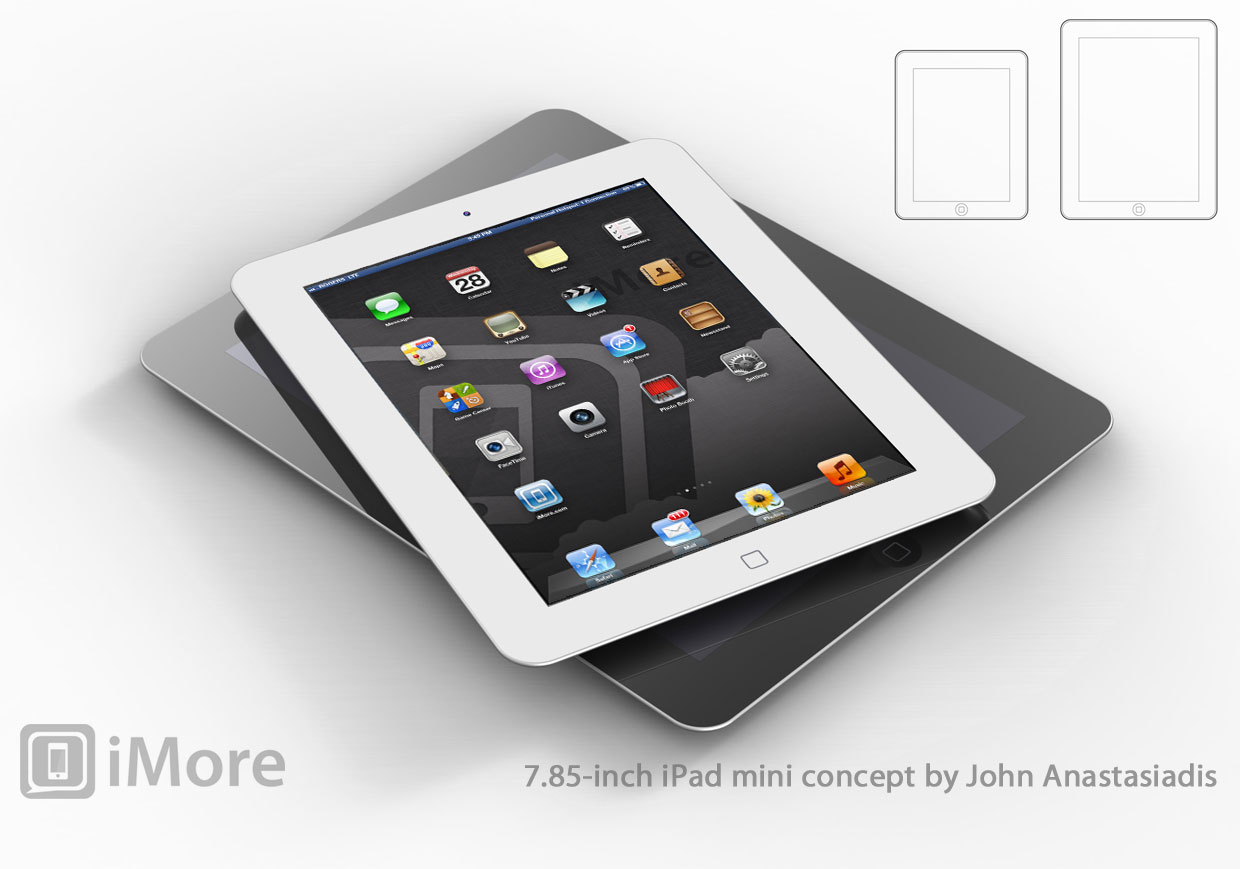
Would Apple release a 7.85-inch iPad and what it would mean for iOS and the tablet market?
While Apple has been busy launching the new iPad -- their third generation 9.7-inch iPad now with eyeball popping Retina display -- the rumor mills have kept on churning away about the iPad mini. A still-mythical 7- to 8-inch iPad, it would compete with the still-not-competitive (marketshare wise) BlackBerry PlayBooks and Amazon Kindle Fires of the budget tablet world, while also not being as portable as a 3.5-inch, $199 iPod touch.
The iPad customer

Apple no doubt has an iPad mini in the labs, just like they have an iPhone nano in the labs. Whether they ever bring it to market, however, is the question. So far they haven't pulled the trigger on the iPhone nano, or on the also-surely-in-the-labs Apple iTV television that's busily competing for rumor attention. Before anything else, before technology, before experience even, Apple is a go-to-market company.
The reason the current iPad is 9.7-inches is that, in all likelihood, it was designed with one specific customer in mind. The ultimate customer. Steve Jobs. Before his untimely passing, Apple's co-founder was the absolute best product guy in the business, and hit more Babe Ruth-style home runs out of more technology parks than anyone.
Apple tested numerous screen sizes and ultimate they, and Jobs, felt the 4:3 aspect ratio, 9.7-inch diagonal display size was the perfect confluence of portability, flexibility, and functionality. It was the best size and shape for browsing, email, music, video, games, and reading. It could, in Jobs' words, run a new class of software that wasn't just scaled-up smartphone apps or awkwardly transplanted PC mouse-and-pointer apps. It could be a transformative device.
The market has proven him right. While competitors continue to misstep thinking they can get an advantage through higher specs, more desktop-like interfaces, more complex gestural controls, or cheaper, content-subsidized models, they've gained almost no traction in the global market because customers haven't shown any real interest in any of those things.
There's no tablet market because the iPad isn't a tablet in the traditional sense. It's a computing appliance that's far more accessible to a far wider customer base than ever before. It's Steve Jobs' relentless mainstreaming and democratization of technology taken to its highest level so far.
My 2 year old godson could use it. My mom can use it. I can use it. That's how you go to market with a goal of selling hundreds of millions of devices, not hundreds of dozens.
Master your iPhone in minutes
iMore offers spot-on advice and guidance from our team of experts, with decades of Apple device experience to lean on. Learn more with iMore!
The challenges of the 7-inch tablet
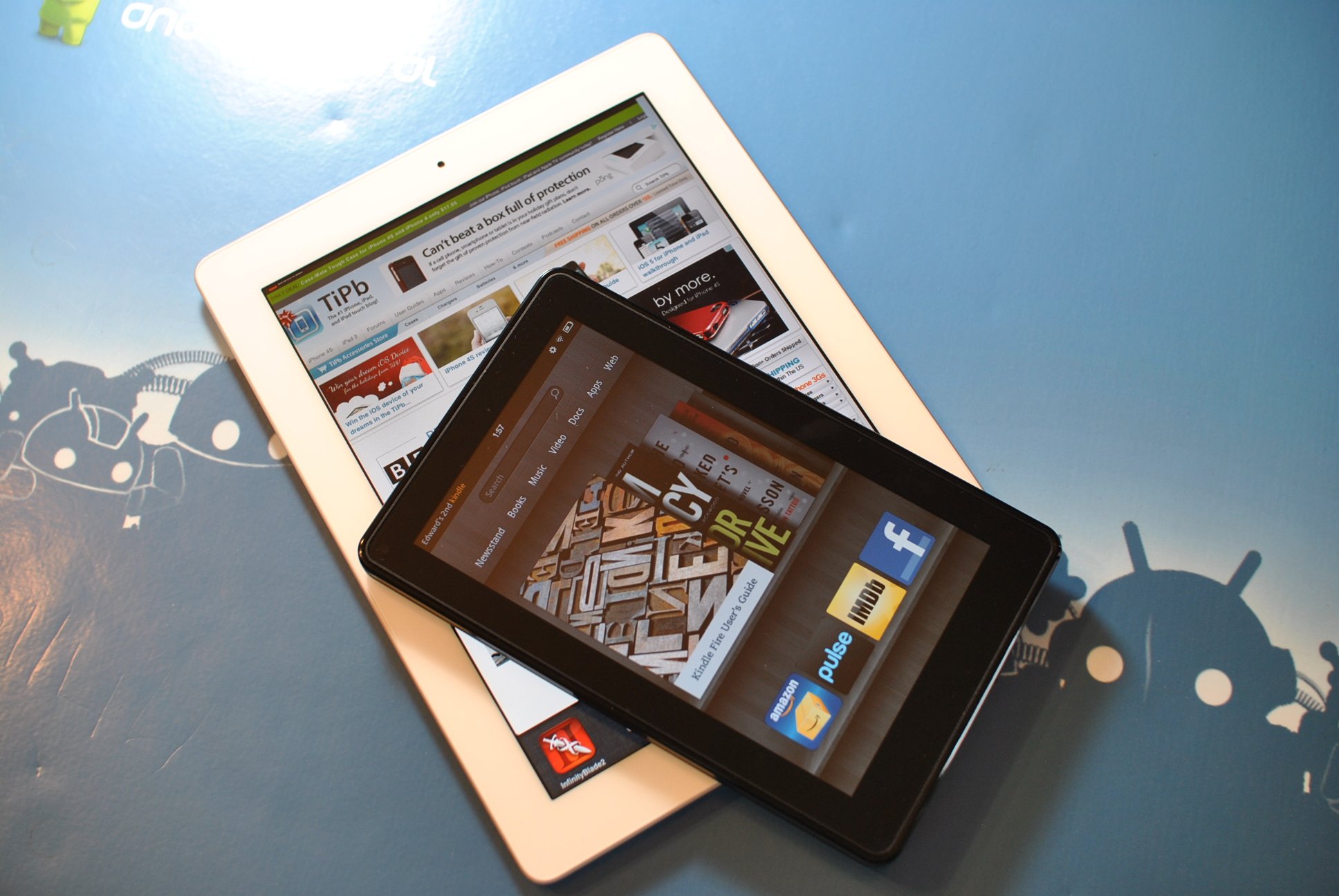
Steve Jobs was also directly dismissive of smaller tablet formats, saying they weren't just smaller, but were significantly smaller (half the size). He did not believe great tablet apps could run on smaller 7-inch diagonal screens. He said that Apple had done extensive testing and really understood the usability implications -- that there were limits as to how close you could pack interface elements. He called 7-inch tablets DOA.
Granted, he was addressing 7-inch tablets that weren't running Apple software. Jobs has also said Apple wouldn't make a phone and that no one wanted to watch video on an iPod, so what he tells the public at one point in time clearly doesn't always reflect what Apple may or may not release in the future. Especially in a future that no longer includes him at the helm.
The 7.85-inch sweet spot
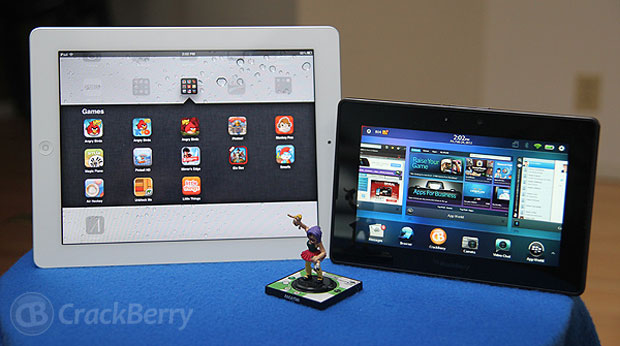
A.T. Faust from App Advice has a tremendous article up crunching the numbers on a 7-inch iPad.
Apple will release a 7.85-inch tablet later this year. And yes, it’s going to be called the iPad mini. It may or may not have the “skinny” bezel everyone’s been talking about, but two things are crystal clear: It’ll sport a 163 PPI 1024 x 768 display, and lots of folks are going to buy it.
He makes a great case for why, including manufacturing efficiencies and app compatibility. Indeed, if Apple does release an iPad mini, for the reasons Faust states, it could very well be that size, at that pixel density.
But back to the challenges
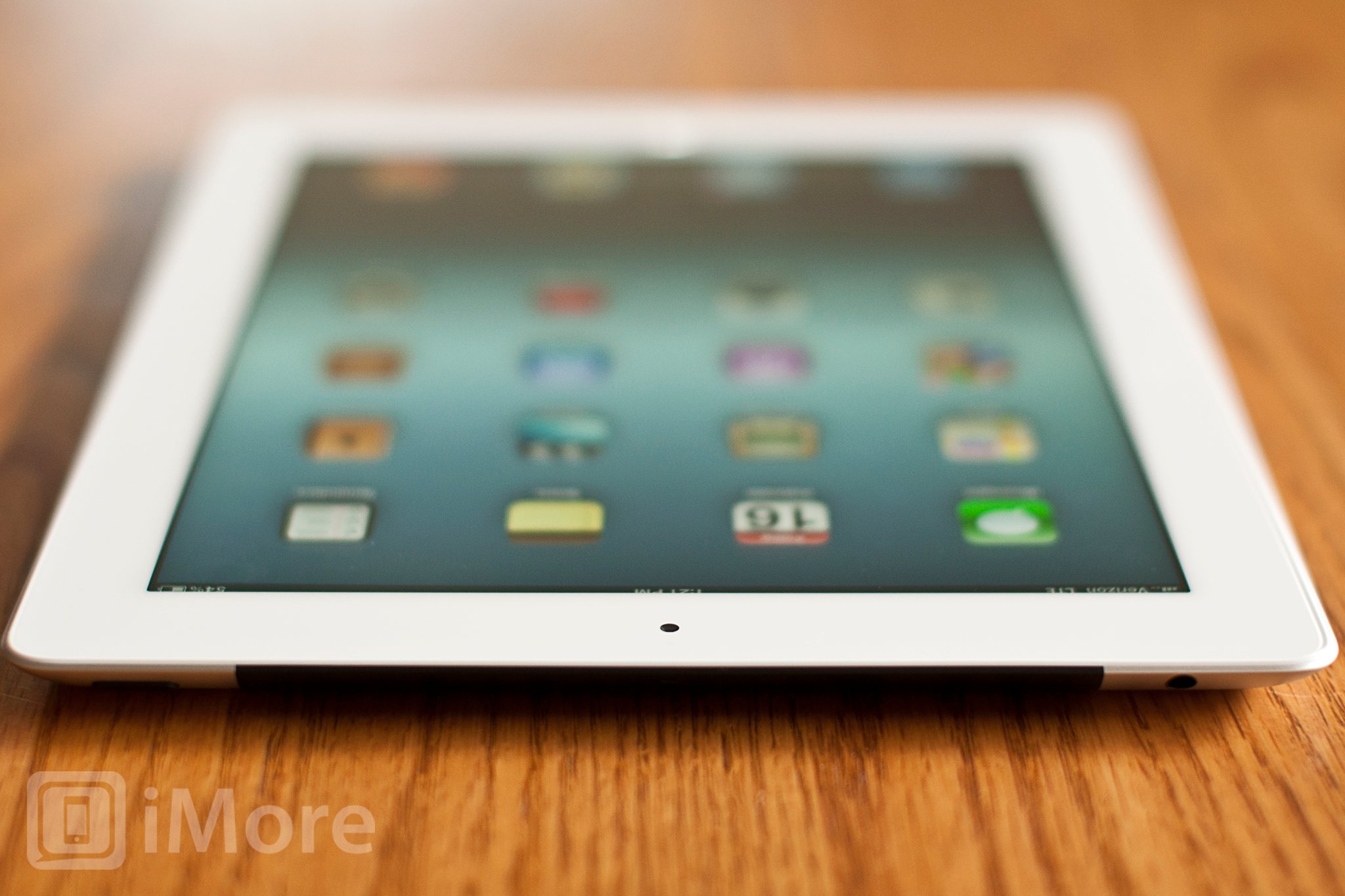
Even granting everything above, that a 7.85-inch iPad mini makes the most sense, there are still a few questions left to ponder.
What about the exiting iPad mini, the iPod touch?
Apple hasn't updated the iPod touch since fall of 2010. It's the only iOS device that hasn't received an update in the last 12 months. It's also already priced at $299. Right now, it seems to exist as an inexpensive point-of-entry to iTunes and the App Store, and way to get non-iPhone and non-iPad users into the iOS ecosystem.
Does that hint that Apple's interest in budget mobiles, like budget Macs, is limited? If it is, is there room for an iPad mini?
Where does the iPad mini fit between the iPad and iPod touch?
If the iPod touch line continues, and doesn't get replaced by something bigger, where would a baseline iPad mini fit between the $199 iPod touch and $399 iPad 2?
$299 is the obvious answer. But is that cheap enough to compete against $199 BlackBerry PlayBooks and Kindle Fires? Against budget Android tablets?
If it goes to $199 (or even if it only goes to $299), would that cannibalize iPod touch or iPad sales? Apple usually doesn't care about cannibalizing their own products to prevent competitors from doing it, but there has to be a compelling marketing reason to do it. Apple would have to feel they could sell enough iPad minis to overcome any loss of iPad sales, the same way they're selling so many iPads it easily eclipses any loss of Mac sales. (And, according to Apple, hurts Windows PC sales more than Apple Mac sales -- a bonus.)
Apple never made a cheaper MacBook to combat low end Windows netbooks. They made the MacBook Air and iPad instead. If the Kindle Fire or other budget tablets ever become a legitimate threat to Apple's profits, they may not respond with a cheaper iPad either. Winning the top end and eschewing the low end in Macs has kept them so far ahead of the industry in terms of profits that they could well choose the same strategy for tablets.
What compelling market demand would Apple satisfy with a 7.85-inch iPad that isn't already satisfied by the existing 9.7-inch iPad or 3.5-inch iPod touch (or iPhone)? If they determine there is one, then like the iPod market, it would make sense to start filling out the line with cheaper alternatives. If they determine there isn't one, then the answer is even simpler.
How would an iPad mini fit in Apple's release schedule?
Apple apparently isn't going to release any more iOS devices this summer, just like they didn't release any last summer, and they're going to be releasing a new iPhone this fall, like they did last fall. Where would an iPad mini fit into that release schedule?
Would Apple piggy back it onto the new iPhone cycle? Would Apple do an additional iPod event this fall and attach it that? Would Apple wait until 2013 for the next iPad event?
Launches are part of going to market, and something Apple takes seriously. What's the window for an iPad mini?
Counter-Resolutionary
iOS devices all currently sport HiDPI Retina displays (even the 2010 iPod touch). If Apple goes with 163 ppi for the iPad mini, would that be a step backwards? Apple typically doesn't go into reverse when it comes to technology.
If Apple is locked on Retina as the future of all iOS products, would they pixel double an iPad mini display and make it to 326 ppi to pass the Retina threshold? If they did, is there any way they could still hit the $299 price point. Could they hit $199?
User experience
Would a reduction from 9.7-inches to 7.85-inches harm the usability of existing iPad apps by scaling down their interface elements too severely? There's an argument to be made that it would.
Yes, original iPhone apps were 3.5-inches at 168 dpi, but they were also 480x320 and optimized for smartphones, not the tablet-class apps the iPad enjoys and Steve Jobs specifically pointed out. iPhone apps did, and still do, present a different user interface than iPad apps, with a single visible column view rather than multiple column views.
Reducing iPad apps to iPhone-like user element sizes might not be the best of both worlds. It might be the worst. It would result in the kinds of compromises -- developers and designers having to make single touch targets to suit both physical sizes -- that the original iPad and it's UI scale was created specifically to avoid.
Creating a 3rd UI size isn't a great alternative either. Having regular and HD versions of apps, or universal apps with both 3.5-inch and 9.7 inch interfaces in them, creates a better user experience but requires more heavy lifting from developers (fine) and more management from users (acceptable). Having regular, mid-sized, and HD versions, or universal apps with 3 interfaces baked in would mean even heavier lifting and more complex management, and larger app sizes for universal binaries. Again, the rewards would have to eclipse the costs.
The mini mindset
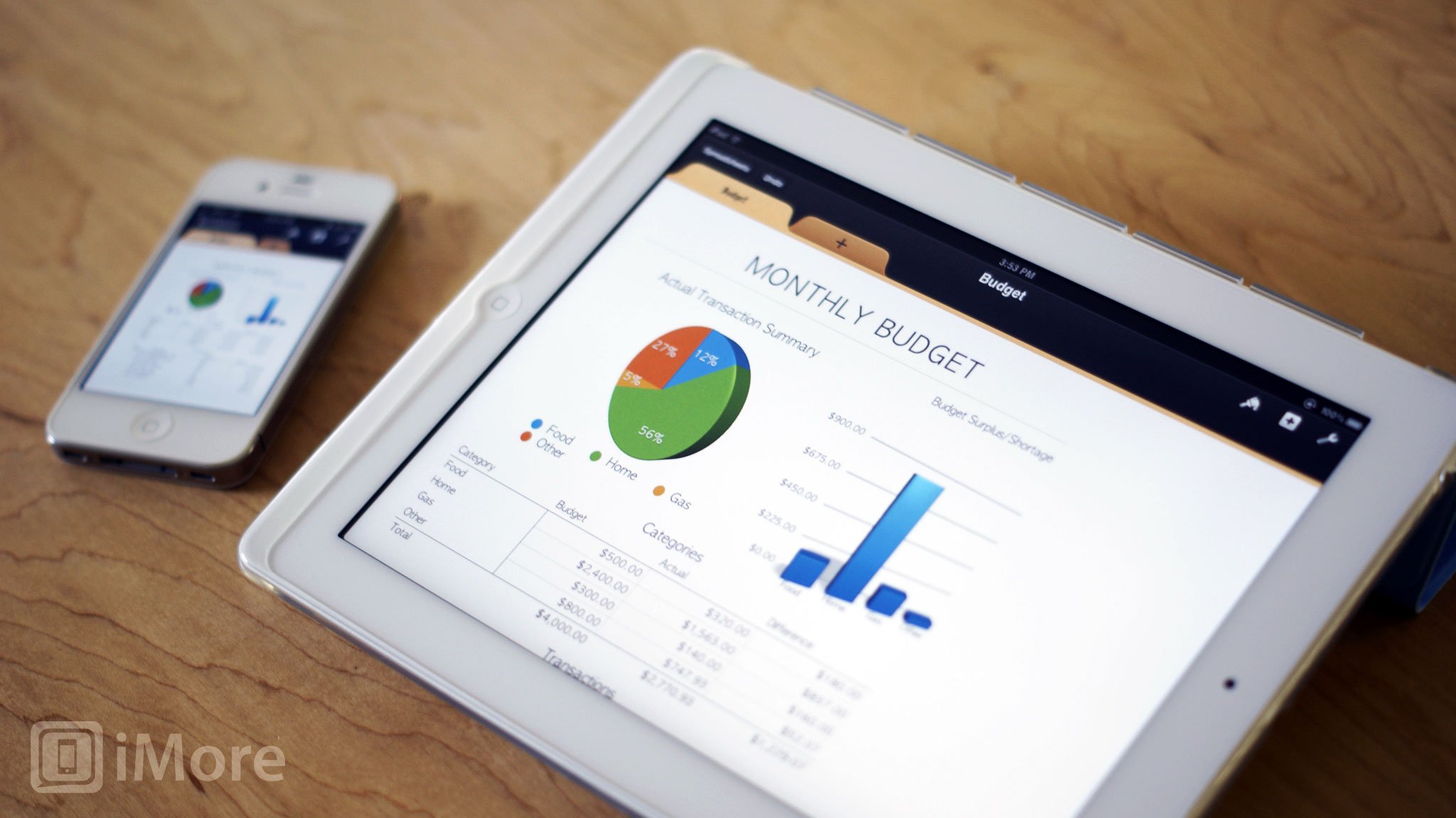
Apple expanded the iPod line with the iPod mini, then replaced that with the iPod nano and added the iPod shuffle. They blanketed the price points and feature levels, and left no space for competitors to get a foothold.
Apple has thus far not expanded the iPhone line, not introduced the iPhone nano, and removed space by keeping previous generation iPhones around at $100 discount levels.
Apple has thus far not expanded the iPad line either, not introduced the iPad mini, and removed some space by keeping the previous generation iPad around at a $100 discount.
The iPad could very well become like the iPod with several models to address several different market segments, but it hadn't yet. Steve Jobs seemed genuinely against it, given the market and technology of the time. Tim Cook's Apple might not be as religious about it, and market and technology conditions will continue to change.
However, just like the iPad had to be fundamentally better at certain things than the smartphone or laptop for Apple to release it, an iPad mini would have to be fundamentally better for a certain type of user than an iPod touch or iPad for Apple to take it to market.
They won't ever do it just because they can. They'll only do it when, and if, they feel they should.
iMore iPad mini concept by John Anastasiadis

Rene Ritchie is one of the most respected Apple analysts in the business, reaching a combined audience of over 40 million readers a month. His YouTube channel, Vector, has over 90 thousand subscribers and 14 million views and his podcasts, including Debug, have been downloaded over 20 million times. He also regularly co-hosts MacBreak Weekly for the TWiT network and co-hosted CES Live! and Talk Mobile. Based in Montreal, Rene is a former director of product marketing, web developer, and graphic designer. He's authored several books and appeared on numerous television and radio segments to discuss Apple and the technology industry. When not working, he likes to cook, grapple, and spend time with his friends and family.
